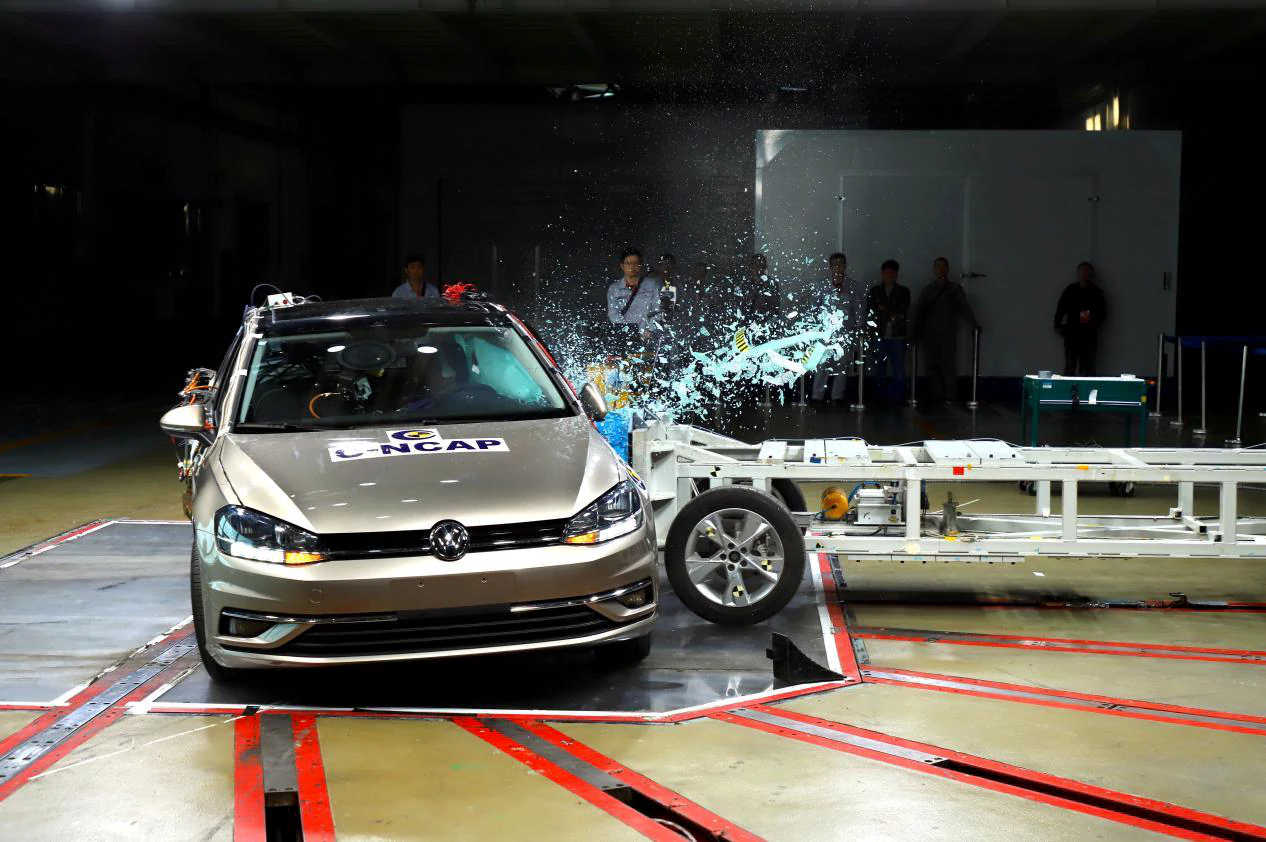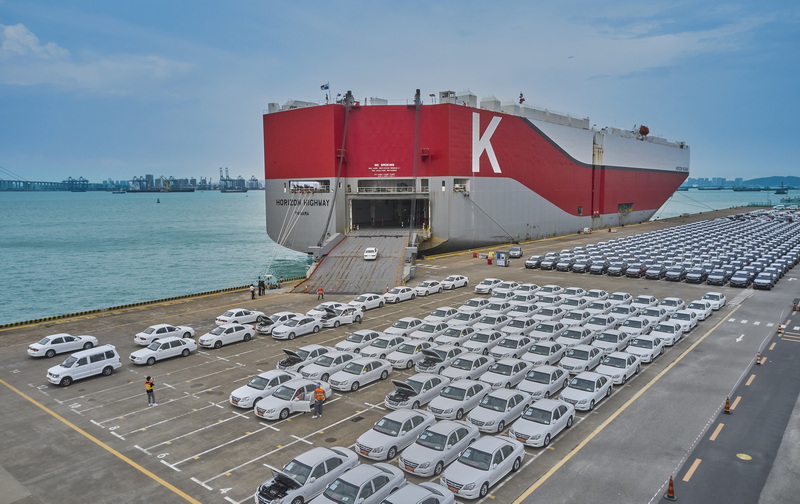The automotive industry has seen significant advancements in safety measures over the years. Various programs have been established worldwide to evaluate vehicle safety. One such program is the China New Car Assessment Programme (C-NCAP), which assigns C-NCAP ratings.
C-NCAP plays a crucial role in ensuring that vehicles manufactured in China meet high safety standards. This blog post will delve into C-NCAP, its ratings, the areas covered in its testing, and why these ratings are important for consumers.
What is C-NCAP (Chinese New Car Assessment Programme)?
The Chinese New Car Assessment Programme (C-NCAP) is an independent automotive safety testing organization. The China Automotive Technology and Research Center (CATARC) officially launched it in 2006. Its primary objective is to assess the safety performance of new vehicles manufactured and sold in China. These tests also extend to the cars exported from China.
Like Euro NCAP, C-NCAP considers local traffic conditions, driving behaviors, and technological advancements. The program has undergone several updates since its inception, with significant revisions occurring in 2009, 2012, 2015, 2018, 2021, and most recently, 2024. Each iteration aims to improve the accuracy and relevance of the assessments conducted.
The C-NCAP evaluates vehicles based on a series of tests designed to simulate real-world crash scenarios. These tests assess how well vehicles protect their occupants during accidents and how effectively they can prevent accidents. The results are presented as star ratings, which provide consumers with an easy-to-understand indication of a vehicle’s safety performance.

What Do C-NCAP Ratings Mean?
C-NCAP ratings are assigned on a scale from 0 to 5, with five stars indicating exceptional safety performance. Here’s what each rating simply means:
- 5-Stars: Excellent safety and equipped with effective crash avoidance technology.
- 4-Stars: Overall, it is safe to drive but may not meet the highest safety standards.
- 3-Stars: Safe to drive, but some advanced safety features are ineffective.
- 2-Stars: Below-average performance in one or more key areas.
- 1-Star: Marginal crash protection with minimal avoidance technology.
- 0-Star: Meets only basic legal requirements for sale but lacks modern safety features.
These ratings help consumers make informed decisions when purchasing vehicles by highlighting the relative safety of different models.
What Areas Are Covered in C-NCAP Testing?
C-NCAP’s testing protocol encompasses several key areas to evaluate vehicle safety comprehensively:
Occupant Protection (Adult and Child)
Occupant protection tests evaluate the vehicle’s ability to protect adult occupants in frontal, side, and rear impacts. Tests assess the performance of seat belts, airbags, and the vehicle’s structure to minimize injuries to occupants. This includes:
- Frontal Impact Tests: Simulating head-on collisions by propelling a vehicle into a barrier at specified speeds.
- Side Impact Tests: Evaluating how well the vehicle protects occupants during side collisions.
- Whiplash Protection Tests: Assessing the effectiveness of seats and head restraints in preventing neck injuries during rear-end collisions.
- Child Protection Tests: These tests assess the vehicle’s ability to protect child occupants using child restraint systems (CRS). They evaluate the performance of various CRS, including child seats and booster seats, in frontal and side-impact scenarios.

Pedestrian Protection
This area assesses how a vehicle’s design impacts pedestrians and two-wheeler riders in the event of a collision. Key factors include:
- Bonnet, Hood, and Windshield Design: Evaluating how well the front of the vehicle absorbs impact.
- Leg and Head Impact Tests: Measuring potential injuries to pedestrians when struck by the vehicle.

Active Safety
Active safety features are increasingly vital in modern vehicles. C-NCAP evaluates technologies designed to prevent accidents before they occur, including:
- Autonomous Emergency Braking (AEB): This system can automatically apply the brakes to avoid or mitigate a collision.
- Lane Departure Warning (LDW): This system warns the driver if the vehicle unintentionally drifts out of its lane.
- Lane Keeping Assist (LKA): This system can automatically steer the vehicle back into its lane.
- Blind Spot Monitoring (BSM): This system warns the driver of vehicles in the blind spots.
- Traffic Sign Recognition (TSR): This system recognizes traffic signs and alerts the driver.

Why Do C-NCAP Ratings Matter?
C-NCAP ratings are crucial for consumers in China and other markets where Chinese-made vehicles are sold. They play a significant role in enhancing road safety for several reasons:
Consumer Awareness
By providing clear and accessible safety ratings, C-NCAP empowers consumers to make informed choices about their vehicle purchases. A higher rating often correlates with better protection for occupants and vulnerable road users. Therefore, safety ratings like those from C-NCAP promote the sales of safer vehicles among users.
Manufacturer Accountability
The competitive nature of the automotive market means that manufacturers are incentivized to improve their vehicles’ safety features to achieve higher ratings. This drives innovation and leads to overall improvements in vehicle safety across the industry. Thanks to this, newer vehicles are developing higher levels of autonomous driving features.
Regulatory Influence
As C-NCAP evolves, it influences regulatory standards within China. The program’s updates reflect changing societal expectations regarding vehicle safety and can lead to stricter regulations for manufacturers. Moreover, C-NCAP ratings also help Chinese vehicles meet the internationally accepted standards for automotive safety.
Public Safety Education
C-NCAP contributes to public education about road safety by highlighting the importance of vehicle design and technology in preventing accidents and reducing injuries. Accidents are less likely to occur as people get educated about the importance of road safety practices.

Final Word: C-NCAP Ratings: What Do They Mean?
C-NCAP ratings are a valuable tool for assessing the safety performance of new vehicles sold in China. By understanding the key areas evaluated by C-NCAP, consumers can make informed choices when purchasing a car. As C-NCAP continues to evolve and its standards become more stringent, we can expect to see safer and more advanced vehicles in the market.
Are you looking to buy a safe car from China? GuangcaiAuto can help! We have a vast inventory of the safest and most reliable cars from China. With cost-effective shipping and affordable pricing, we make the whole process seamless.
We have a selection of 60+ car brands. If you can’t find the car you need, please get in touch with us and tell us about your requirements. We’ll arrange it for you at the best possible price.
Please explore our blog for the latest news and offers from the Chinese auto market.


